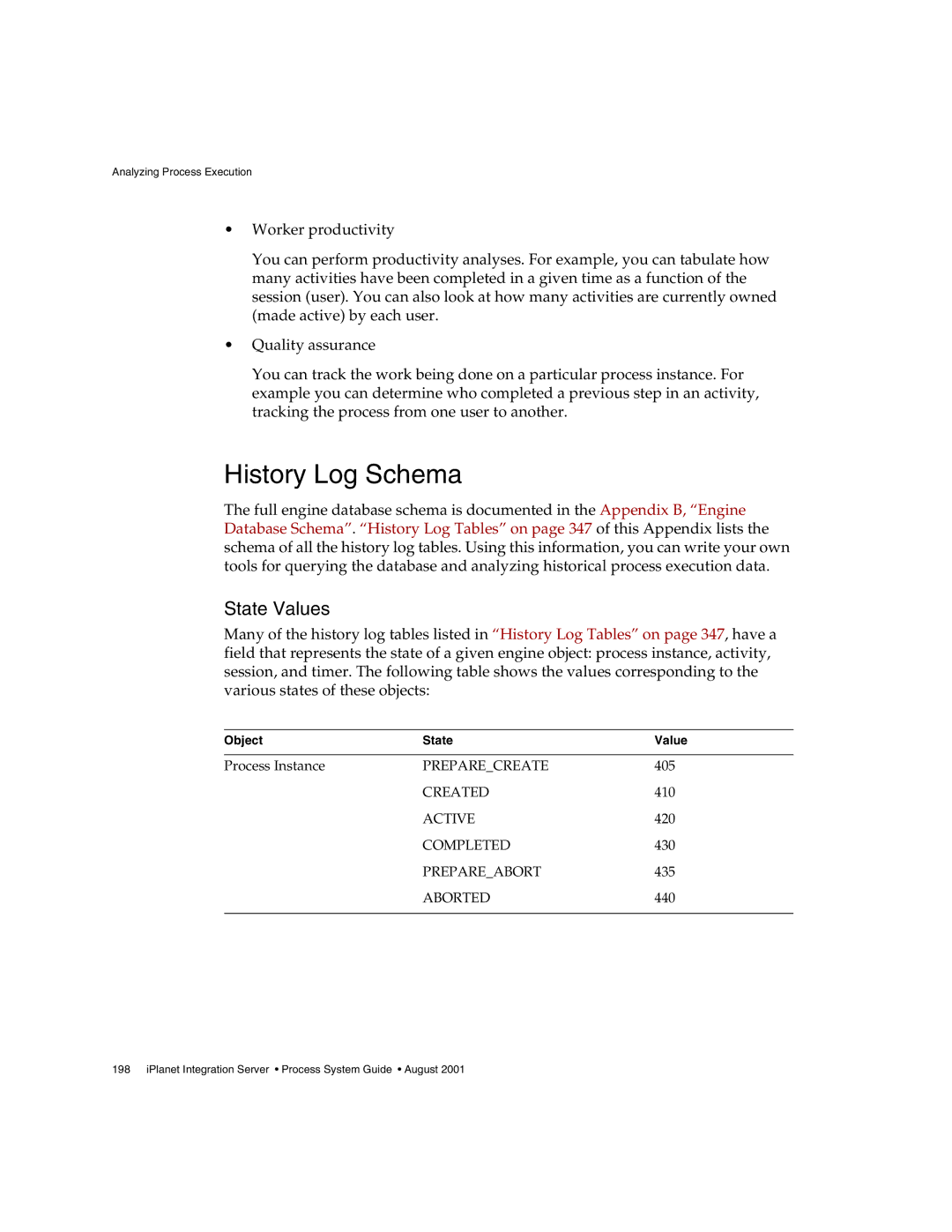Analyzing Process Execution
•Worker productivity
You can perform productivity analyses. For example, you can tabulate how many activities have been completed in a given time as a function of the session (user). You can also look at how many activities are currently owned (made active) by each user.
•Quality assurance
You can track the work being done on a particular process instance. For example you can determine who completed a previous step in an activity, tracking the process from one user to another.
History Log Schema
The full engine database schema is documented in the Appendix B, “Engine Database Schema”. “History Log Tables” on page 347 of this Appendix lists the schema of all the history log tables. Using this information, you can write your own tools for querying the database and analyzing historical process execution data.
State Values
Many of the history log tables listed in “History Log Tables” on page 347, have a field that represents the state of a given engine object: process instance, activity, session, and timer. The following table shows the values corresponding to the various states of these objects:
Object | State | Value |
|
|
|
Process Instance | PREPARE_CREATE | 405 |
| CREATED | 410 |
| ACTIVE | 420 |
| COMPLETED | 430 |
| PREPARE_ABORT | 435 |
| ABORTED | 440 |
|
|
|
